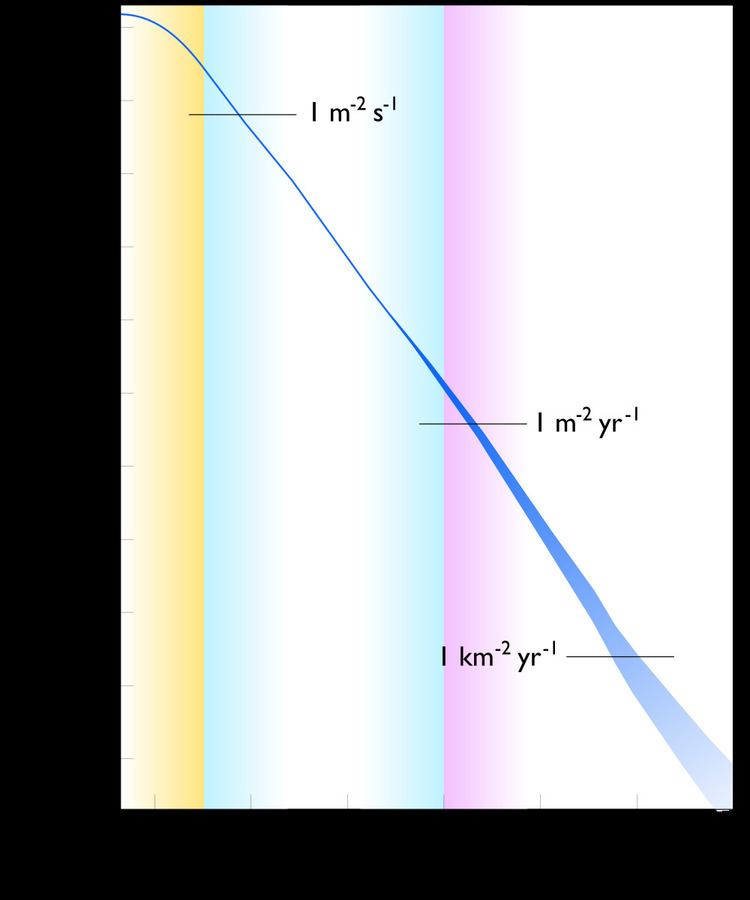 | ||
Extragalactic cosmic rays are very-high-energy particles that flow into the Solar System from beyond the Milky Way galaxy. The energies these particles possess are in excess of 1015 eV.
Contents
Origin
Unlike solar or galactic cosmic rays, little is known about the origins of extragalactic cosmic rays. This is largely due to a lack of statistics: only about 1 extragalactic cosmic ray particle per square meter per year reaches the Earth's surface (see figure).
There are many ideas about which processes may be responsible for cosmic rays with such high energies. In the 'bottom-up' approach, cosmic rays gain more and more energy through electromagnetic processes. Bouncing randomly back and forth in the shock waves of some violent object allows some of the particles to gain energy. Eventually they may build up enough speed that the object can no longer contain them, and they escape. Proposed sites for this type of acceleration include gamma ray bursts and active galactic nuclei.[1] Indeed, recent analysis of cosmic ray measurements with the Pierre Auger Observatory suggests a correlation between the arrival directions of cosmic rays of the highest energies of more than 5×1019 eV and the positions of nearby active galaxies.[2]
There are many more possible sources scientists are considering. These include colliding galaxy systems, accretion flow shocks to clusters of galaxies, and more exotic processes from the very early universe, such as the decay of superheavy particles trapped in the galactic halo, or topological defects.[3]
Composition
Due to the very low flux of extragalactic cosmic particles received on Earth, little is known about their composition. Most estimates, based on theoretical and numerical models, predict that light atomic nuclei such as protons are the dominant particle type.[4]
